Myanmar opened up to tourism recently. I felt lucky to have experienced the splendour of the place so freshly unveiled. It was rather like witnessing a butterfly emerging from its chrysalis with tremulous legs, quivering with beauty and fragility, taking its first few steps into the wider world.

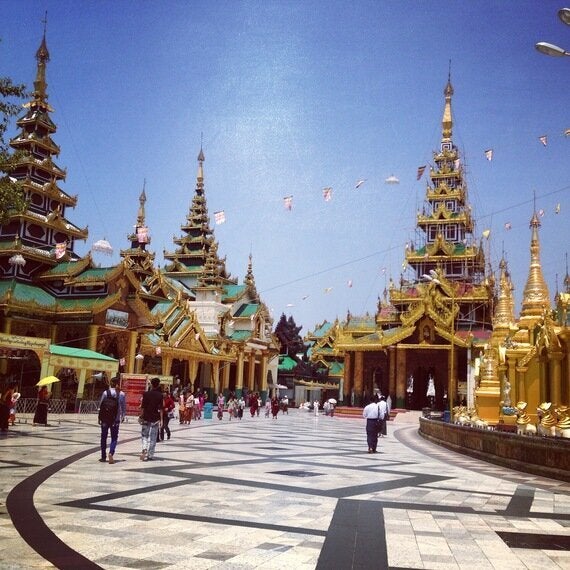
The country is still run by an oppressive regime. It has one of the widest income gaps in the world, since advocates and ex-members of the totalitarian government still control most of the economy. It is an awful reality I caught a glimpse of on my trip, as I stood on a dusty road in a remote area waiting to board a flight at the local airport. Out of nowhere there appeared a convoy of armoured vehicles. Tens of massive 4x4s blocked up the narrow road; men in military uniform carrying guns got out of the cars. The more senior looking figures were fat: swollen and grotesque like over-ripe fruit. They wore knee high leather boots. In a particularly clinical fashion, some of the men wore pristine white gloves. An oppressive cloud descended; even the chirping birds seemed to have been stifled.
Yet, like an antidote to the government's malignity, the Burmese people exude an overwhelming benevolence. They are so open and gentle, without an ounce of aggression or hostility. They are also poor. That much is without doubt. However, they do not live in abject poverty, unlike many people in neighbouring India. There are no slums; instead there are bustling food markets with a wide array of produce. The most colourful panoply of fruit and vegetables had to be at Lake Inle: an astonishing place where humanity and nature exist in symbiotic harmony.
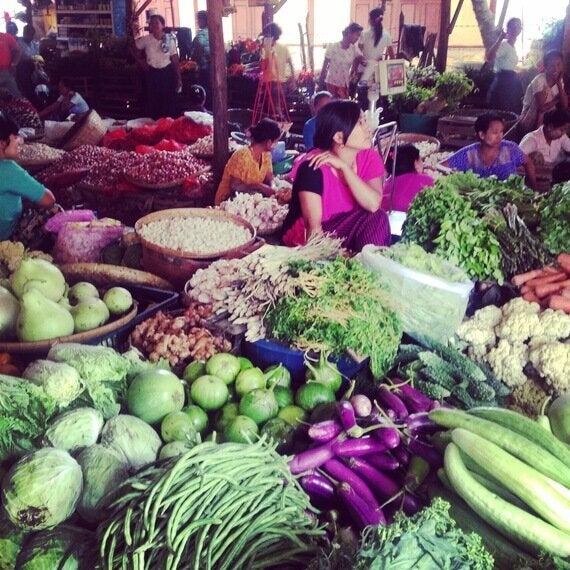
The Lake covers an expanse of 116km sq, and is filled with villages. Houses on stilts lay in the middle of the lake, nestled against small man-made islets and carved up by aquatic streets where the locals canoe to get around. Floating gardens stretch for as far as the eye can see, hosting a cornucopia of organic produce. Every facet of the lake's settlements has been painstakingly created by hand, something that seems so foreign to us in our world of machines and mass production.
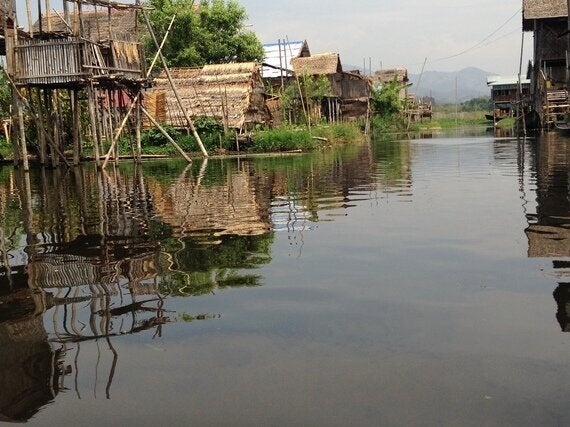
Inle is a place of immense natural beauty. Gargantuan mountains snake around the lake's perimeter. At dusk and at dawn they appear purple in the half-light, and in those twilight hours a mist rises up from the lake's waters; a serene gossamer haze. When the sun is high in the sky, the lake's placid surface transforms into resplendent rose-gold ripples. It is magnificent, but intensely bright.
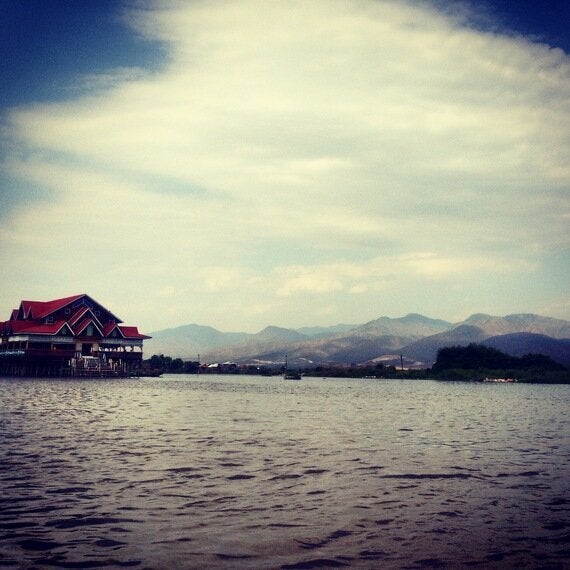
Inle is slightly cooler than other parts of the country, like Yangon and Bagan, but the heat of the sun is still relentless. In the midday hours the temperature and the humidity can become nigh on unbearable. Throughout Burma, in that fierce sunlight, the copious amounts of gold leaf adorning temples is so dazzling that it can burn your retina.
The severity of the climate is a reminder that it's easy to romanticise. There is an enviable purity and wholesomeness in the Burmese way of life but their lives are tough. For the people of Inle, certainly, their basic sustenance relies on hard labour: constant toil and effort; it is a life of physicality, and the state provides no welfare.
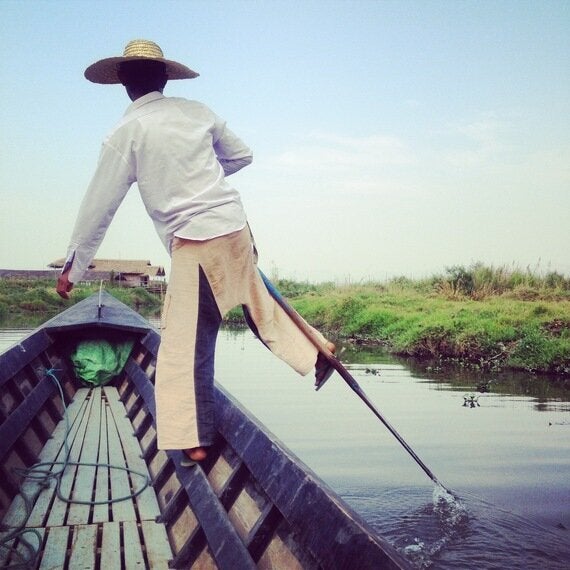
The lifeblood of Myanmar is its spirituality, and I think this accounts for the over-arching feeling of peace and contentment that I perceived. One doesn't need to be religious to be in touch with that ineffable part of the human condition: the part that seeks out transcendent experience and feelings of awe; that responds to a sense of the past and the many other human lived before us; to those shared rituals, feelings and experiences.
Bagan, the early capital of Myanmar, and one of the holiest sites of Buddhism in the world, is one of those rare places where one is able to feel especially close to the roots of human spirituality.
There are myriad smaller shrines known as stupas, as well as much grander temples that are diverse in their size and style. The best way to explore them is by hopping on an electric bike, which is quick and pretty hilarious too. There are a lot of temples. Almost three thousand still remain, although there used to be more than double that. Built by the kings of Bagan between the 11th and 13th centuries, their ethereal silhouettes still emanate the power and prosperity of the lost kingdom that created them.

Because Buddhism does not revolve around an omnipotent deity, it feels more like a philosophy, a state of being. It's far less dogmatic and the mission to convert others is not part of its ethos, yet it still comes across as inclusive. The aesthetic of these buildings and the art they contain is exquisite. Undulating rhythmic curves are woven into intricate designs that feel supple and fluid, like a tribute to nature and its organic forms.
Going to Myanmar provides a glorious escape from the superficiality of the world in which we live. However, a huge concern is how the nascent tourist industry might spoil what until now has been totally preserved. Tourism will bring better infrastructure and more jobs, which is undoubtedly positive, but there is such a finely balanced relationship between the people, their environment and their way of life as a whole, that it could easily be damaged. Tourism will need to be carefully managed and handled with huge sensitivity to what is a very special place.
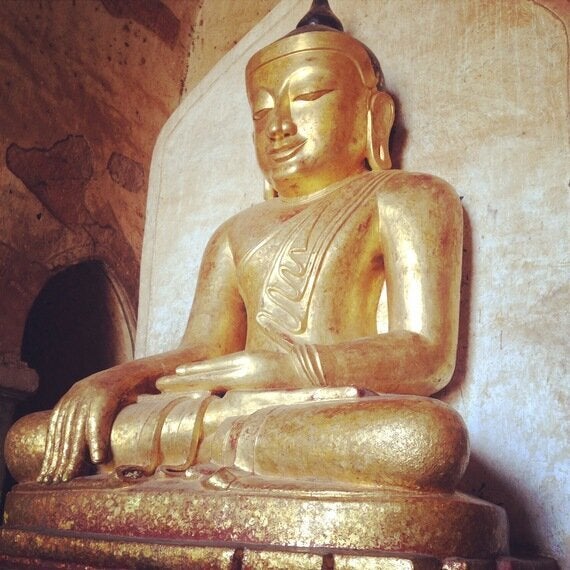

All photos blogger's own